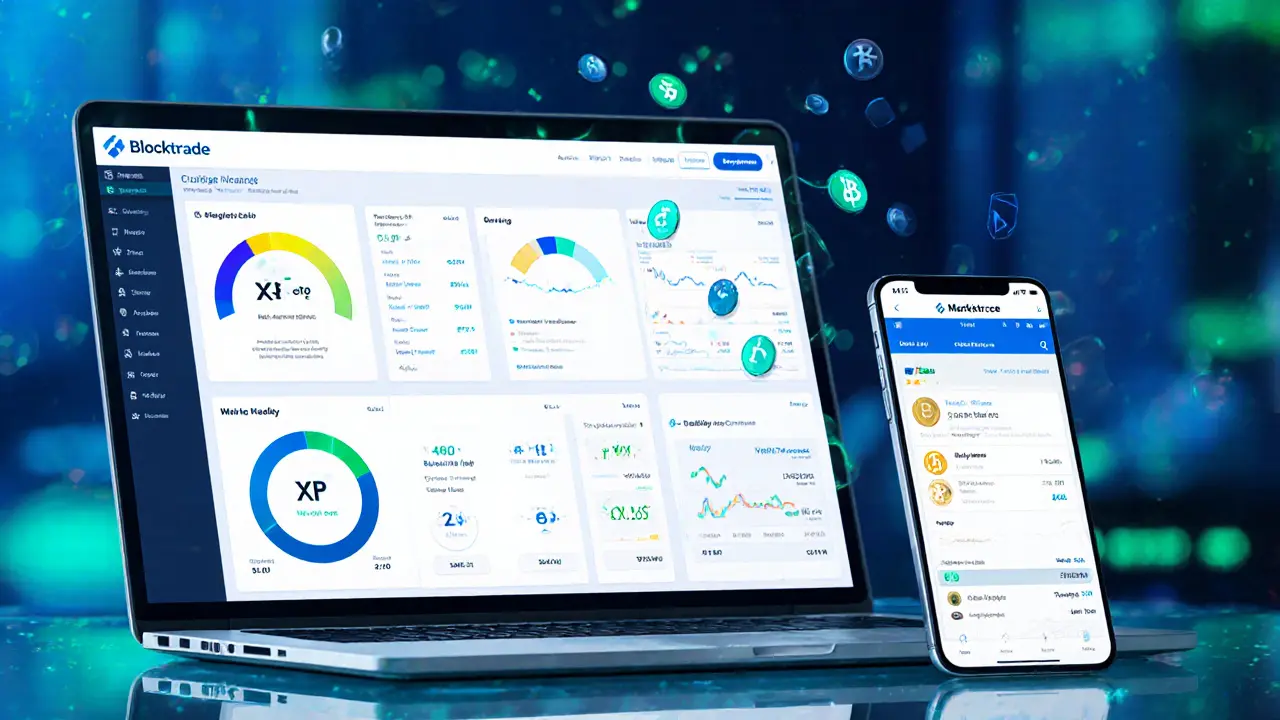Blocktrade Fees Explained: What You Need to Know
When talking about Blocktrade fees, the charges applied by the Blocktrade crypto exchange for trading, depositing, and withdrawing digital assets. Also known as trading commissions, they determine how much of each transaction stays in your pocket.
Blocktrade fees are part of the larger crypto exchange fees, the cost structure that every digital‑asset platform uses to stay afloat and provide liquidity. Within this family, the maker‑taker model, a pricing scheme that rewards liquidity providers (makers) with lower rates and charges active traders (takers) a higher fee is the most common way Blocktrade sets its trading rates. In practice, a maker order adds depth to the order book and typically pays a fee around 0.08%, while a taker order removes liquidity and may be charged about 0.12%. The spread – the difference between the best bid and ask – also counts as an implicit cost, especially on less‑liquid pairs. Understanding these three components – maker‑taker rates, spread, and the overall exchange fee framework – gives you a solid base for estimating the true cost of each trade.
Beyond the trade‑side, withdrawal fees, the flat or percentage‑based charges applied when moving crypto out of the exchange to an external wallet can eat into profits if you’re not careful. Blocktrade often charges a fixed network fee that reflects the blockchain’s actual transaction cost, plus a small service surcharge of 0.0005 BTC for Bitcoin withdrawals or equivalent amounts for other coins. Deposit fees are usually zero, but some fiat‑on‑ramp methods may include processing costs. All these charges together shape the net return you see after a round‑trip trade. For active traders, the cumulative effect of maker‑taker fees, spreads, and withdrawal costs can be measured with a simple formula: total cost = (trade fee × trade volume) + spread loss + withdrawal fee. By plugging in your own numbers, you can decide whether Blocktrade’s pricing is competitive compared to alternatives like Binance or KuCoin.
Blocktrade fees matter because they directly affect your bottom line, but they’re only one piece of the puzzle. The platform’s fee transparency, the availability of fee‑rebate programs for high‑volume users, and the speed of settlement all play a role in the overall trading experience. In the sections below you’ll find deep dives into specific fee types, comparisons with other exchanges, and actionable tips to minimize costs while staying compliant with regulations. Ready to see how each fee component works in real‑world scenarios? Let’s explore the collection of guides that break down every aspect of Blocktrade’s pricing model.

Blocktrade Crypto Exchange Review: Features, Fees, and Safety
Jun 11, 2025, Posted by Ronan Caverly
A comprehensive Blocktrade crypto exchange review covering fees, security, features, user experience, and who should use the platform.
MORESEARCH HERE
Categories
TAGS
- decentralized exchange
- crypto exchange review
- cryptocurrency
- crypto coin
- CoinMarketCap airdrop
- smart contracts
- tokenomics
- cryptocurrency exchange safety
- crypto exchange
- cryptocurrency airdrop
- crypto airdrop
- cryptocurrency exchange
- crypto airdrop guide
- blockchain token distribution
- DeFi
- crypto exchange scam
- crypto airdrop 2025
- Ethereum
- cross-chain interoperability
- ERC-20
